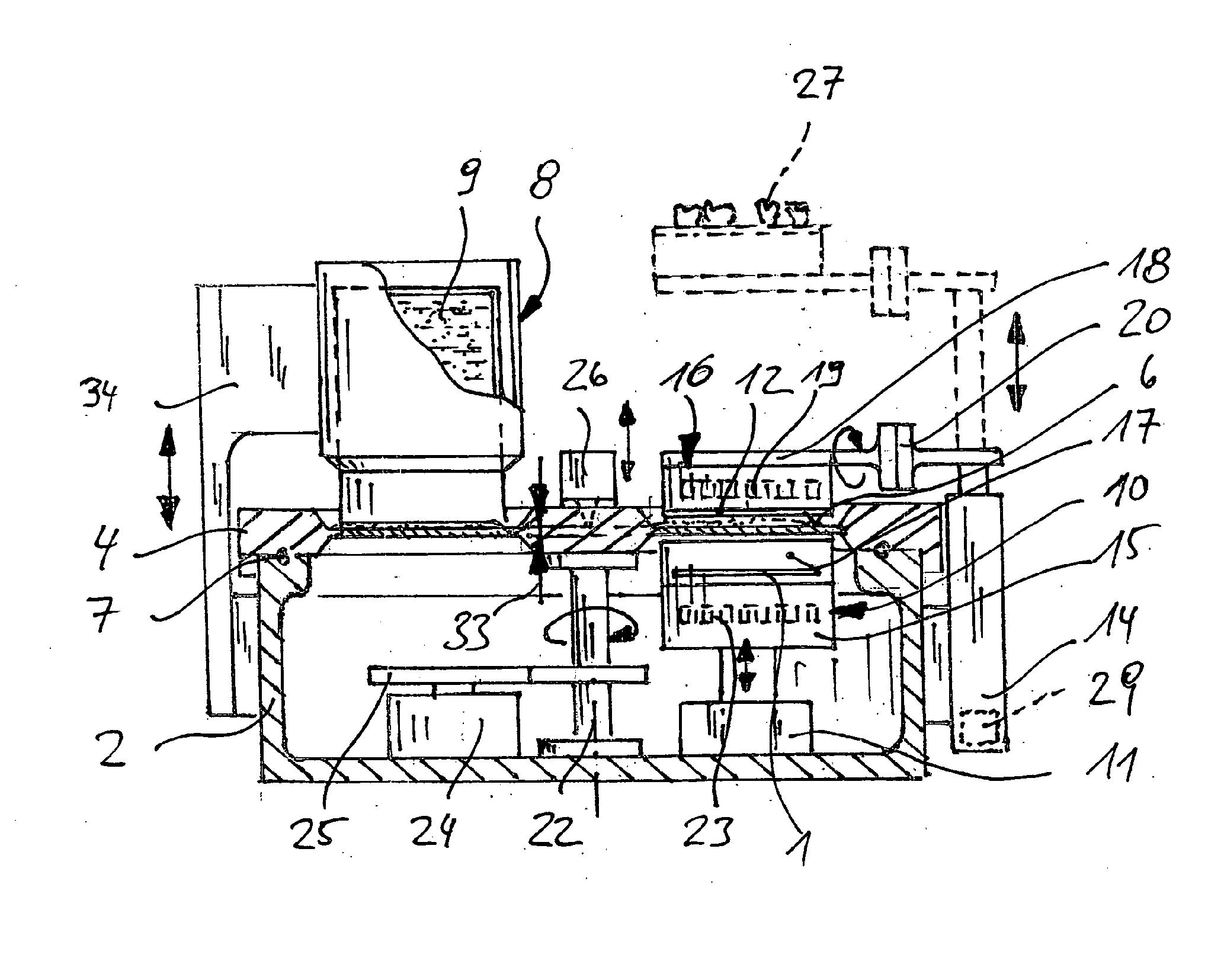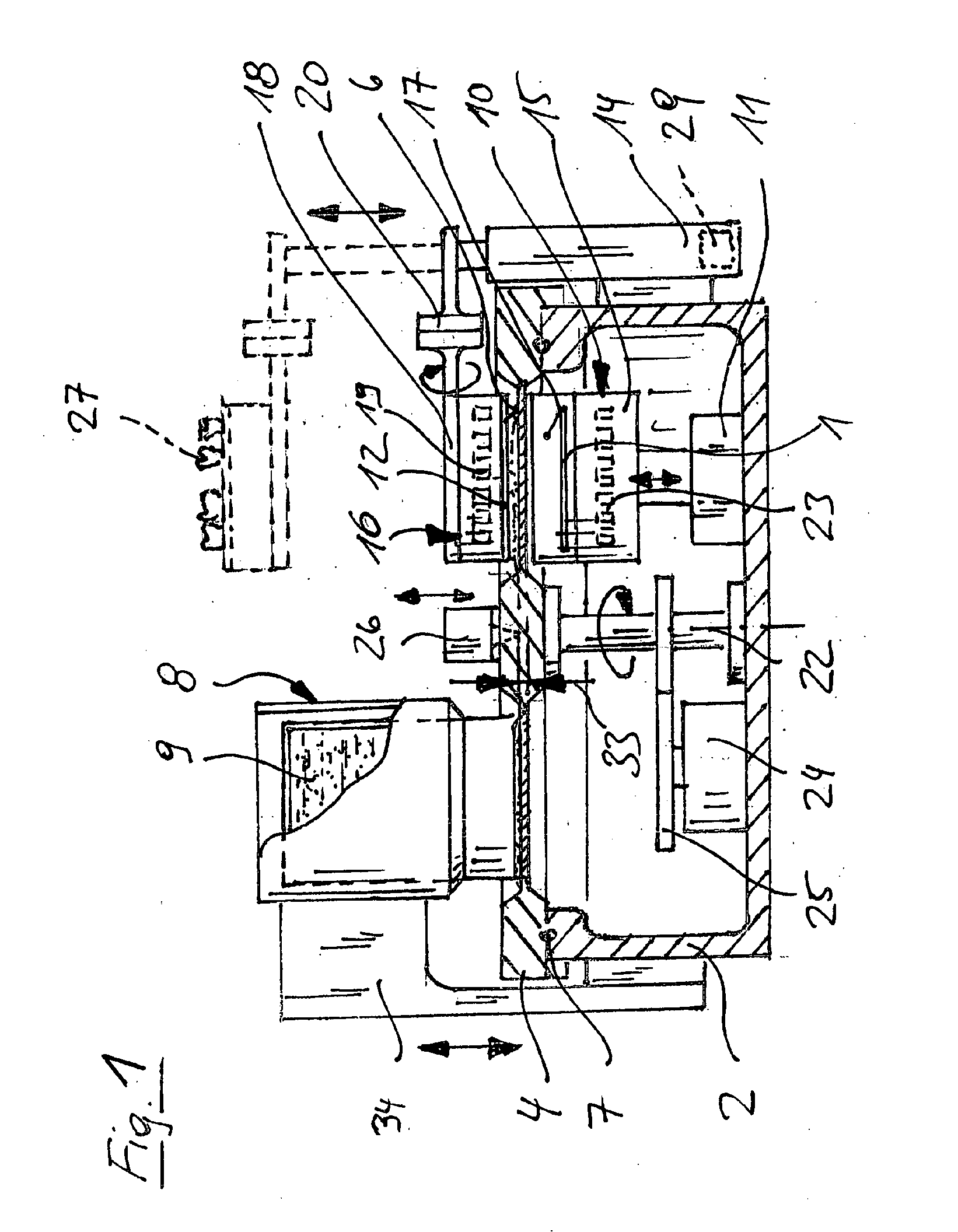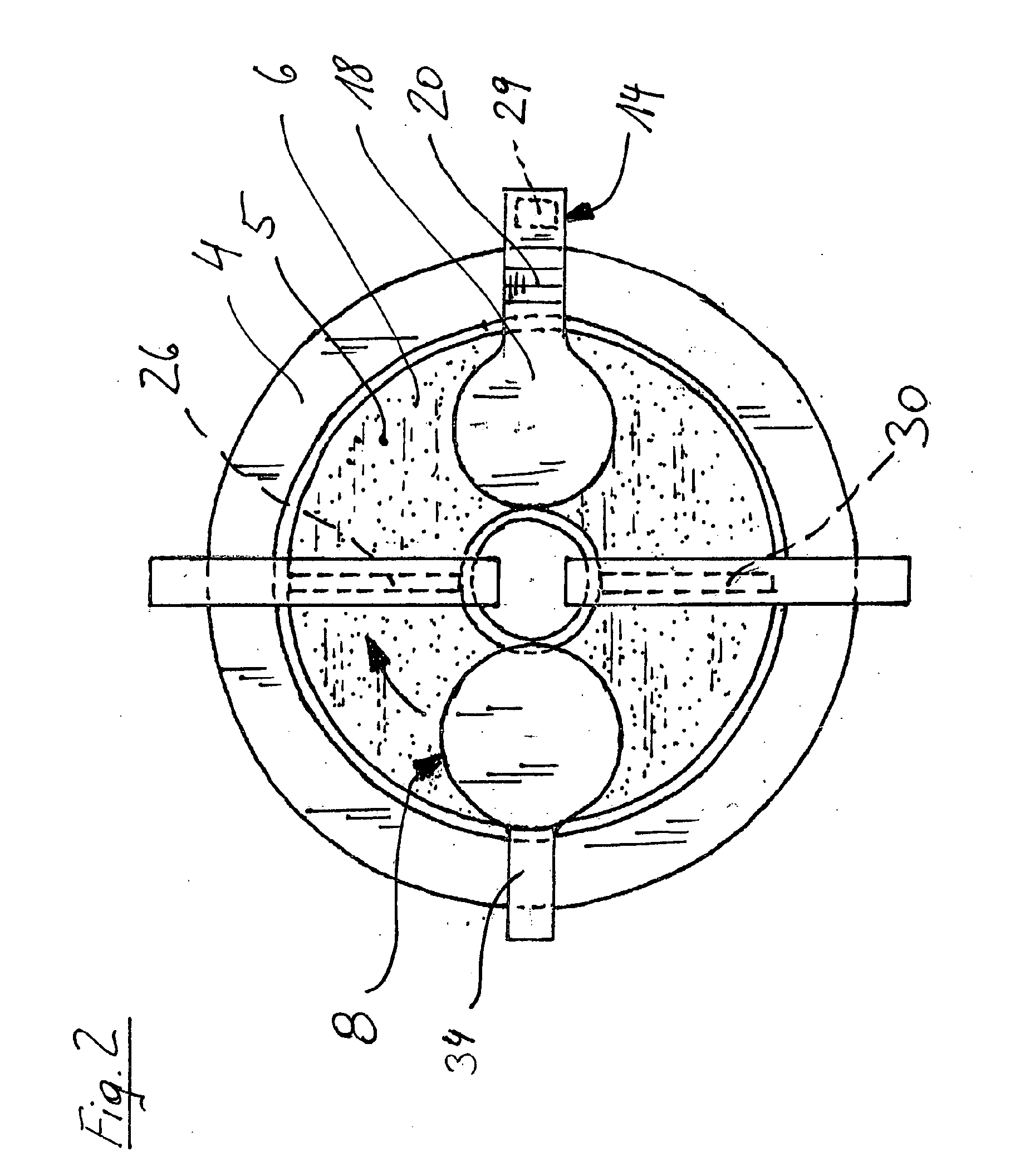Device And Method For Processing Light-Polymerizable Material For Building Up An Object In Layers
a technology of light-polymerizable materials and objects, applied in the field of objects building up, can solve the problems of inability to improve, thin layers cannot be applied in reproducible fashion, and methods used today for ceramic dental restoration elements produced by removing materials
- Summary
- Abstract
- Description
- Claims
- Application Information
AI Technical Summary
Benefits of technology
Problems solved by technology
Method used
Image
Examples
Embodiment Construction
[0022]The device according to the invention is characterized in that the vat is horizontally movable with respect to the exposure unit and the build platform and in that a feed device is provided and, under the control of the control device, discharges light-polymerizable material into the vat, the exposure unit and the build platform being arranged horizontally at a distance from the feed device, and in that the control unit is arranged for moving the vat between successive exposure steps in a prescribed way into a horizontal plane by a drive in order to bring light-polymerizable material that has been discharged in this way by the feed device onto the vat bottom into the region between the exposure unit and the build platform.
[0023]In a preferred embodiment, arranged between the feed device and the exposure unit / build platform in the direction of movement of the vat is an application device, in particular a doctor blade or a roller, the height of which above the vat bottom can be ...
PUM
| Property | Measurement | Unit |
|---|---|---|
| thickness | aaaaa | aaaaa |
| thickness | aaaaa | aaaaa |
| thicknesses | aaaaa | aaaaa |
Abstract
Description
Claims
Application Information
 Login to View More
Login to View More - R&D
- Intellectual Property
- Life Sciences
- Materials
- Tech Scout
- Unparalleled Data Quality
- Higher Quality Content
- 60% Fewer Hallucinations
Browse by: Latest US Patents, China's latest patents, Technical Efficacy Thesaurus, Application Domain, Technology Topic, Popular Technical Reports.
© 2025 PatSnap. All rights reserved.Legal|Privacy policy|Modern Slavery Act Transparency Statement|Sitemap|About US| Contact US: help@patsnap.com



